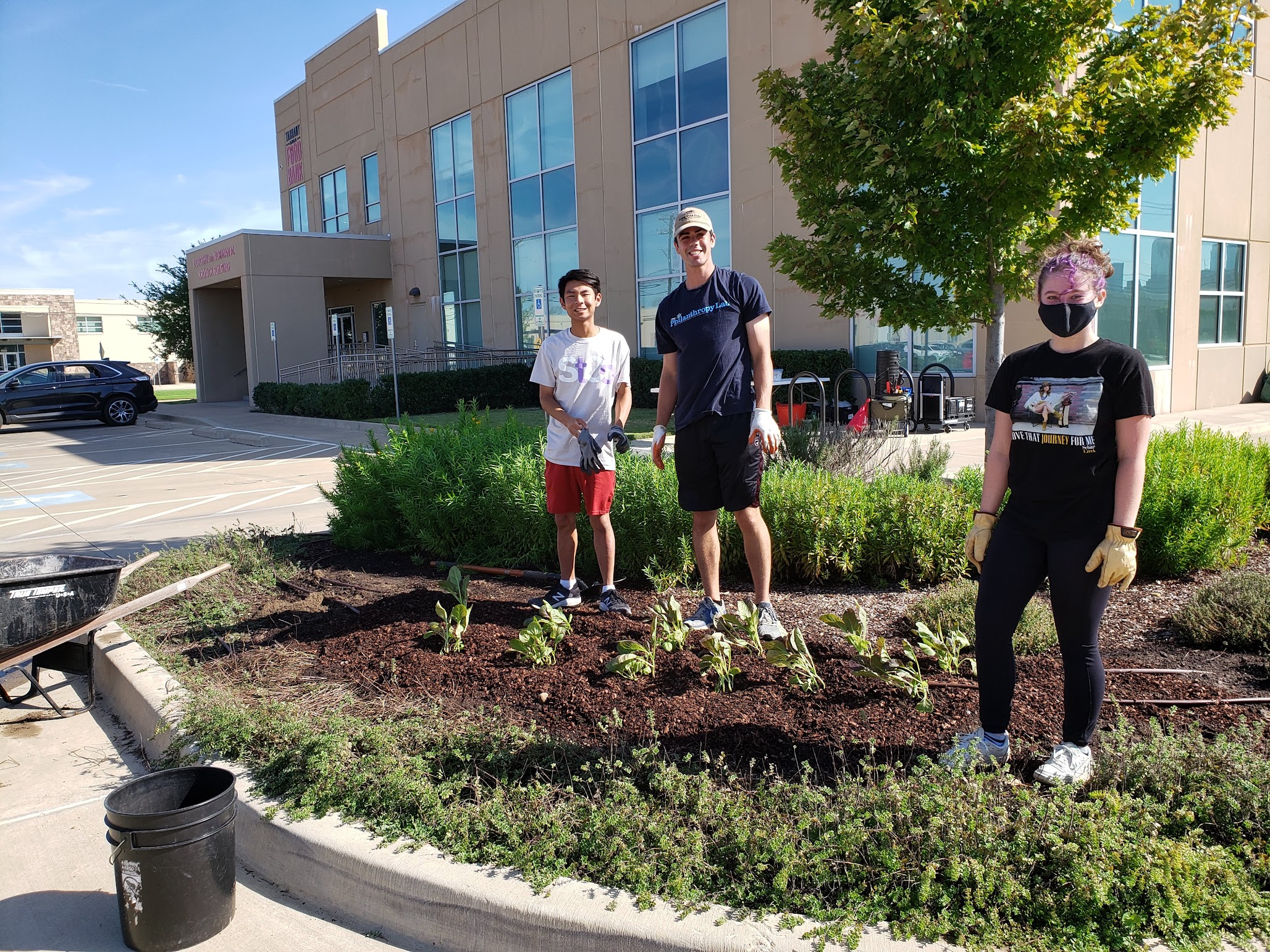How do we tackle the world’s “wicked problems”? Homelessness, food insecurity and human trafficking are just some of the ills plaguing our society. Neeley School of Business and John V. Roach Honors College faculty partner, Stacy Grau, Ph.D., saw an opportunity to create an interdisciplinary course challenging students to do just that. In her Honors course, “Design for Social Impact,” students use design and systems thinking to create community-based solutions for Tarrant County.
“There are a lot of students at TCU that are interested in social impact, innovation and entrepreneurship, but there aren’t a lot of options for it,” she shared. “It was a great opportunity to create this experience for students.”
Framework for Change
During class, students work in teams to research, develop and cocreate ideas to help the community. They meet in the Rees-Jones Hall Idea Lab, an all-glass classroom where students can write on the walls and create prototypes. “It’s a space that is kind of their space. If they want to leave their work up on the walls, they can totally do it which is way different from our other classrooms” stated Grau.

Three frameworks helped students get down to the roots of these multifaceted problems:
- Design thinking. Understanding everything about the user and whom we are designing the solutions for.
- Systems thinking. Stepping back to see the big picture, including any underlying issues or systems surrounding the “wicked problem.”
- Collective impact. Working together with essential entities using shared governance, communication and agenda.
“The biggest thing about design thinking is your focus on empathy. You really want to understand whom you’re designing for,” said Drew Brooks ’22 who graduated with his bachelor’s in strategic communication with a minor in general business and took the course in the fall of 2021. “You are slowing down and saying, ‘okay those are the solutions, but let’s do a ton of research on the front end to figure out what will actually benefit whom we are designing for.’”
Claire DeCastro ’23 is an entrepreneurship major with minors in Spanish and global business, and she took the class in the fall of 2022. “We had to have a deep understanding of the problem before we can create solutions, which is interesting because humans inherently want to just start creating solutions,” DeCastro shared. “However, you have to really understand the problem first.”
Getting to Know Our Community
Grau encourages every class to not only see but do. She wants students to have a firsthand experience of the community they are creating for. Over the last few semesters, students have tackled food insecurity in Tarrant County.
DeCastro’s group volunteered with The Taste Project, which uses a pay-what-you-can model for food service. At the Taste Community Restaurant, there are no prices on the menus, instead, it’s a give-and-take concept. You can:
- Pay what you can afford.
- Pay what you would typically pay.
- Pay what you would typically pay, plus a little extra.

"I loved volunteering at Taste. 80% of their staff is volunteers. You can be a server, hostess or cook. I was a server, and I had so much fun,” said DeCastro. “The other people who volunteer there are incredible and gave me such great life advice from just talking.”
DeCastro’s team investigated how TCU students might utilize a service like Taste and how they perceive food insecurity. The group tabled on campus and asked, “what is food insecurity?” to determine their understanding of a problem that affects students. The group then asked, “how much would you pay for a donut if they knew it was going to a good cause?” to gauge how students would contribute in a pay-what-you-can model. The end goal was to share their findings with their class and provide a faculty member with the information gathered to be an asset to them.
Brooks’ team researched food insecurity along the I-35 divide. The southeast side of the interstate has limited access to nutritious food and grocery stores and is overpopulated with fast food options. While the southwest side is home to the Medical District and easy access to several nutritious food options. This led them to an organization that provides resources, infrastructure and support services to launch a new community-owned and operated urban farm in southeast Fort Worth, Grow Southeast.

“Our group had the opportunity to visit Opal’s Farm which is a Grow Southeast farm. You got to talk to the people running the farm. You got to go into the community and drive through these areas where these farms are,” remarked Brooks. “You are getting outside the TCU bubble and seeing what is the community that we are solving for? What type of people are there? What’s the farm doing? What does it look like?”
Their group was focused on value-add experiences and marketing the urban farms. They wanted to create a sustainable way for the farms to produce profit to ensure their viability. They developed the idea of a food truck event to bring community members to the farms and learn about their resources.
Connecting the Pieces
The mission of the Honors College is to broaden minds and encourage connections. "The other thing that I really love about this class is that students just naturally connect what they learned in other classes,” Grau shared. “I’ll hear we learned about this thing in Wendy Williams’ ‘City as Text,’ and here’s how we are using that. ‘Nature of Giving,’ Dr. Pitcock’s class is another one that gets integrated often which I think is the point of the Honors colloquia.”
Additionally, one of Grau’s biggest goals in the class is to give students the foundation of design thinking to use outside the classroom. “This was my first introduction to design thinking. It can be applied to literally anything you’re doing,” said Brooks. “I used it in my internship this summer on user experience. To have any solution that is worthwhile, we have to have that first solution rooted in empathy and research. That is what ultimately going to create the best solutions that could solve some of these greater wicked problems.”
While we may never solve the world’s wicked problems, we can’t wait to witness our Honors students Lead On for the greater good using the skills they developed in our courses.